Categories: Sources of light, Sockets and switches
Number of views: 29421
Comments on the article: 3
Illuminated switch and LED lamps
A backlit switch is a convenient and beautiful solution. It is needed in order not to look at night with your hand where the light turns on, randomly clapping on the wall. But with the transition to energy-saving, and then on led bulbs many have encountered the problem that the light is blinking or dimly lit with such a switch. The backlight also causes this effect. In this article, we will explain why the LED bulbs flash when the light is off.
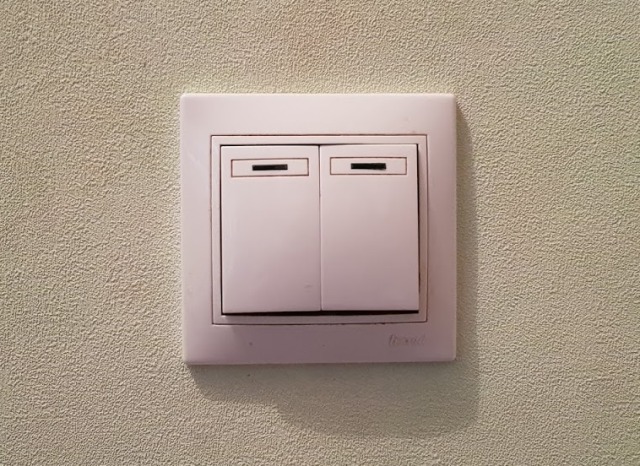
Types of illumination of switches and principle of operation
The switches set the backlight of one of two possible types:
1. Neon light (glow discharge indicator).
2. LED.
Light indication on a neon bulb, as well as on LEDs, consumes low current (units of milliamps). The neon indicator lights up when the switch is in the “OFF” position, that is, when its contacts are open. When you press a key, closing its contacts, the lamp turns on and the display turns off.
The logic of work is elementary. But how does the backlight of the switch work?
Regardless of the type of backlight, so that it burns, it is necessary that a current flows through the bulb. Previously, for home lighting, we used incandescent or halogen lamps, in any case, the light was emitted by a metal spiral.
So the current of the LED or neon flowed along the circuit:
PHASE-BACKLIGHT-SPIRAL LAMP-ZERO
This is clearly illustrated in the figure below.

Check out the schematic of this circuit.
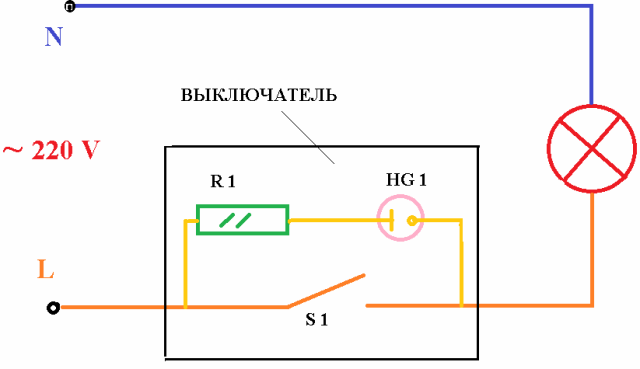
The LED backlight circuit is shown below.

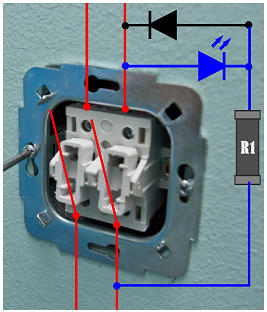
Why LED and energy-saving lamps flicker
But the spiral of an incandescent lamp is a closed section of the circuit, albeit with great resistance. So we smoothly approached the main issue of the article - the reason for the LED lamps to flash from a switch with an indicator.
The backlight current cannot flow through LEDs or a compact fluorescent lamp (energy saving) because they are not directly powered from a 220V network and do not represent an analogue of a spiral. Both types of economical bulbs are powered by a special device, for fluorescent lamps it is called an electronic ballast, and for LED - driver.
In general, both power supplies are a pulse converter. When you turn on such a lamp in a circuit where there is a switch with a backlight, its current starts charging the smoothing capacitor until there is enough energy on it for a short-term start-up of the lamp.
This is the reason for the lamp to flash when the switch is off. Depending on the power of the lamp and the circuitry of the power circuits, the lamp may flicker, burn dimly or not at all respond to such switches. The backlight, in turn, may or may not work at all.
How to fix the problem
Everything is very simple, so that the light does not blink, you need to remove the LED or neon from the switch. To do this, remove the decorative switch button, remove it from the wall and remove the neon or LED, it can either be in the form of such a module as shown below, or simply installed between the contacts. In any case, you need to remove the indicator lamp.
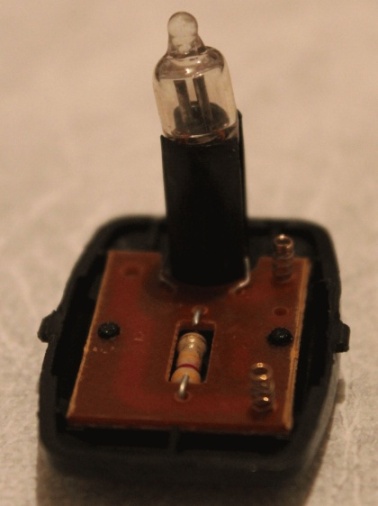
This video demonstrates this process.
If you do not want to remove the backlight, form an alternative path for the current to flow. For this, a high resistance resistor is installed in parallel with the lamp - 50-510 kOhm 2 W. It can be calculated by the indicator current, or it can be selected empirically.
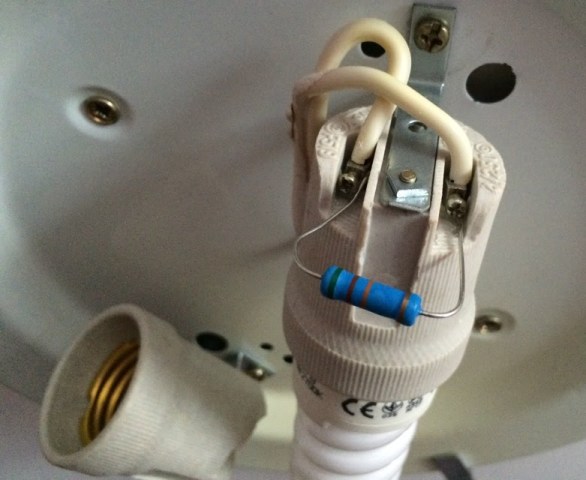
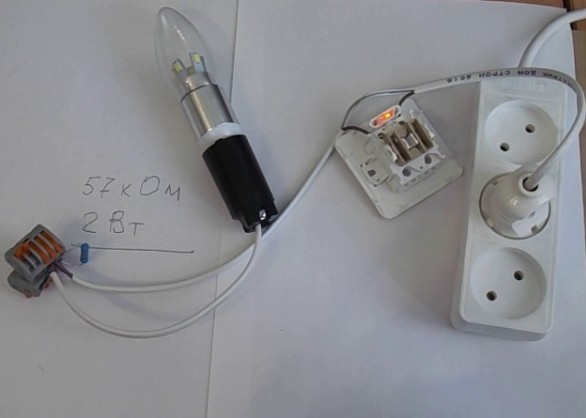
But many electricians scold this method due to the fact that the resistor can heat up. You can use the reactance of a capacitor for the same purpose.The capacitance of the capacitor should be of the order of fractions of a microfarad (0.1-0.5uF), and the operating voltage should be at least 400V.
Conclusion
It is not difficult to eliminate the flashing of the disconnected lamp from the backlit switch. We presented three options for solving this problem. Each has its own advantages and disadvantages. Which one to choose is up to you. It is also worth noting that now many LED lamps do not blink from the backlight of the switch.
See also at i.electricianexp.com
:
